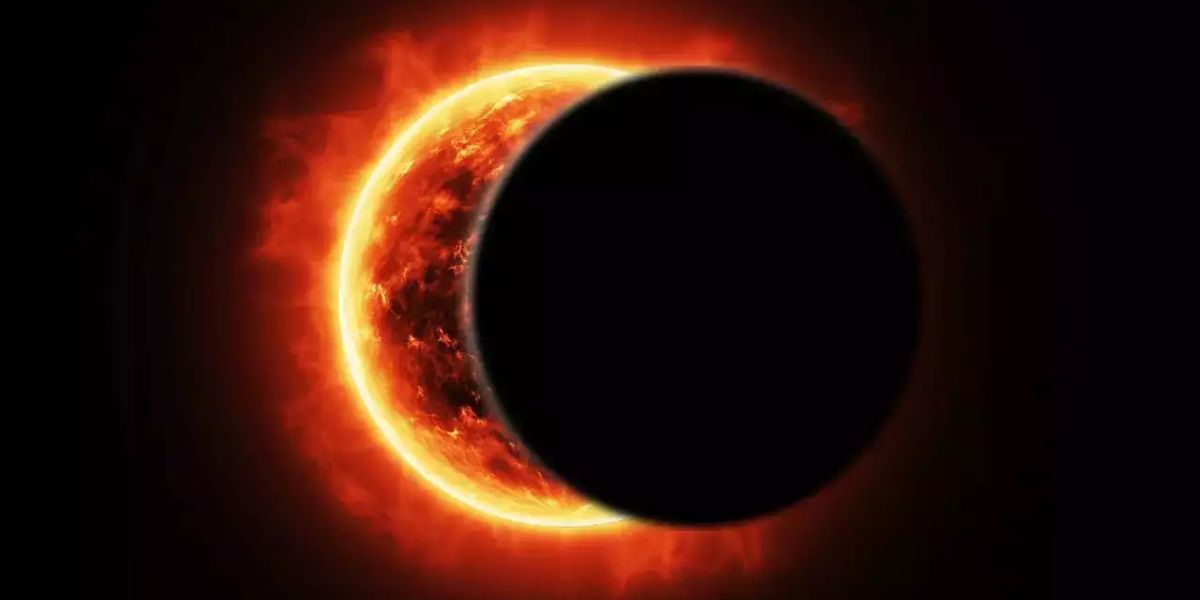There was a total lunar eclipse in March 2025, and on Saturday, March 29, there will be a partial solar eclipse.
NASA said the moon will move in front of the sun during the partial eclipse, causing a shadow to fall over areas of the Northern Hemisphere. Only a portion of the sun will be obscured, making it appear crescent-shaped.
Even though there won’t be a total eclipse like there will be in 2024, observers should still use eye protection to experience the phenomena safely.
The partial solar eclipse will be visible in parts of North America, as well as in parts of Europe, Africa, northern Asia, minor portions of South America, Greenland, and Iceland, according to astronomy enthusiasts.
March 2025 partial solar eclipse map
Where observers can witness the partial solar eclipse is depicted on a NASA map. Only people who are in the moon’s shadow will be able to see it.
The NASA map’s curving yellow lines indicate the area of the sun that will be completely obscured by the moon during the peak of the partial eclipse.
The areas along the green lines indicate the times of the maximum eclipse.
When is the partial solar eclipse happening?
Since the solar eclipse will already be underway at daybreak, observers in the United States who are within its path will need to get up early in order to see it.
Elsewhere, the partial eclipse will take place later in the day: in the afternoon or early evening in eastern Europe and northern Asia, and in the middle to late morning across Europe and northwest Africa.

NASA gave precise times for the beginning, peak, and finish of the partial eclipse in a number of cities worldwide, including six in the Northeastern United States.
NASA instead gave sunrise times for the optimum viewing experiences because the partial eclipse would begin before sunrise in the United States.
In Portland, Maine, where the sun will rise at 6:27 a.m. EST and the partial eclipse will peak at 64% at 6:30 a.m., the earliest viewing in the United States will take place. By 7:10 a.m., the partial eclipse will be over.
The sun will rise in Boston at 6:31 a.m. EST, and by 6:38 a.m., the partial eclipse will have reached its maximum coverage of 43%. By 7:07 a.m., the eclipse will have ended.
Buffalo and New York City were the two New York cities for which NASA gave viewing times. Sunrise in New York City is scheduled for 6:44 a.m. EST, and the eclipse will peak at 22% by 6:46 a.m. By 7:04 a.m., the partial eclipse will be over.
In Buffalo, the coverage will be extremely limited, with a maximum of only 2%. The partial eclipse will peak at 7:05 a.m. and end at 7:09 a.m. EST, with sunrise occurring at 7:02 a.m. EST.
Baltimore, Maryland, and the nation’s capital will also receive relatively minimal eclipse coverage. The maximum coverage will be 3% in Baltimore and only 1% in Washington, D.C.
The partial eclipse will peak at 6:59 a.m. and terminate at 7:01 a.m. EST, with sunrise in Washington occurring at 6:56 a.m. EST.
Sunrise in Baltimore is scheduled at 6:55 a.m., and the partial eclipse will peak at 6:57 a.m. and conclude at 7:02 a.m.
Severe Weather Expected This Weekend, Affecting 22 States Starting Sunday
The sun will rise at 6:31 a.m. EST in Philadelphia, so viewers there are a little luckier. by 6:49 a.m., the sun will rise, and by 6:51 a.m., the partial eclipse will achieve its maximum coverage, which is 12%. At 7:03 a.m., the partial eclipse will come to an end.
This September, there will be another partial solar eclipse, but it won’t be visible from the United States.
How to Watch the partial solar eclipse safely?
Without appropriate eye protection, it is never safe to gaze directly at an eclipse. Try eclipse glasses, sometimes called safe sun watching glasses. Avoid wearing ordinary sunglasses.
According to NASA, it can also be risky to see the partial eclipse through a camera lens, telescope, binoculars, or any other optical equipment, even if you are wearing eclipse glasses or a portable solar viewer.
It is possible to add solar filters to the gadgets.
This Information has been sourced from cbsnews







Leave a Comment